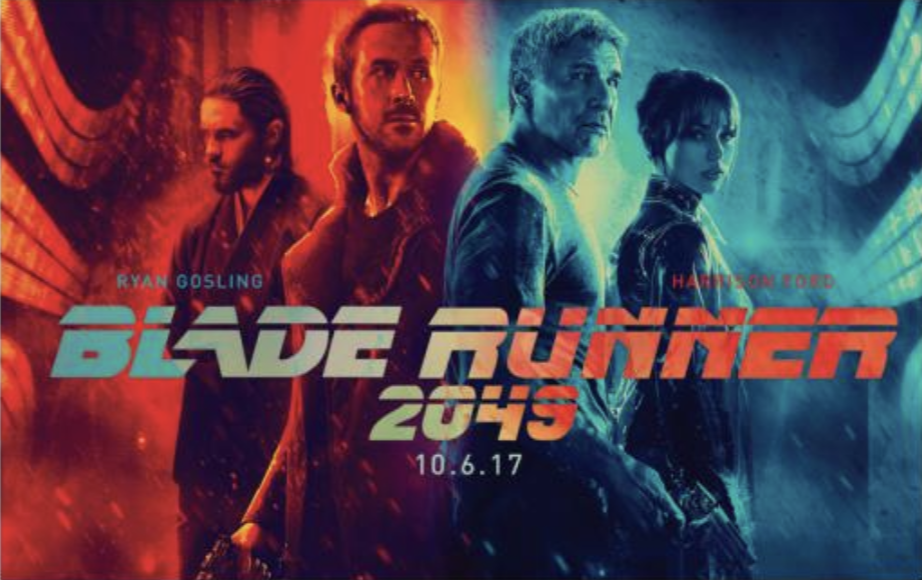By: Daniel Kilgallon, Staff Writer
Let’s face the truth; blockbusters in Hollywood have basically become an endless string of reboots, sequels, or adaptations of popular source material. I can’t stand this lack of creative storytelling in the mainstream movie industry and I think it is just about time for studios to stop throwing together rehashes or continuations of classic stories. Blade Runner 2049 easily could have suffered from this and joined a trashy group of 80’s reboots series such as Terminator, Ghostbusters, and Robocop. Luckily, the right people were involved in the project and avoided that completely; this film may be a modern classic when 2049 comes around.
1982’s Blade Runner has gained cult classic status in the thirty five years since it’s release and there have been a shocking seven cuts of the movie shown during that time. I have only ever seen 2007’s The Final Cut, the most recent edit and director Ridley Scott’s definitive version of the film. Scott returned in the role of an executive producer for this sequel and critically acclaimed filmmaker Denis Villeneuve (Prisoners, Arrival) signed on to direct. Blade Runner 2049 picks up thirty years after the events of the first movie and once again depicts a grim, futuristic version of Los Angeles in which agriculture is all but lost.
Anyone familiar with the Blade Runner universe knows that it revolves around “replicants”; androids that perform slave labor for humans and are nearly identical in appearance. In the first film, replicants were banned from Earth due to their violent acts, and it was the responsibility of “blade runners” such as Rick Deckard (Harrison Ford) to assassinate or “retire” those who returned to the planet. In 2049, Ryan Gosling assumes the same duty in the role of LAPD Officer “K”. However, the approach of authorities changed over the years, and K is part of a new breed of replicants assigned to kill older, outlawed models of their own kind. Eventually, K uncovers a shocking secret that traces back to Deckard and forces him out of hiding.
In order to resurrect an old story through a contemporary sequel, the universe needs to be supplemented and the story must be built upon. Many reboot films fall incredibly short in this sense, as they simply modernize the visuals and retell old stories. 2049 functions excellently in evading these tropes and adds even more depth to the already rich universe that was established in the original movie. There are a few scenes of holographic concerts of icons such as Elvis Presley and Frank Sinatra, which I thought added a very cool dynamic to this new film. I loved 2049’s world building elements like this and found them to be even more impressive than the groundbreaking visual effects and camera work on display from legendary cinematographer Roger Deakins.
Just like the original, Blade Runner 2049 leaves plenty of room for interpretation, particularly in the area of social implications. For example, parallels have been drawn between exploited social classes and the ways in which replicants are used for manual labor in the films. Another idea that the replicants bring to the table is the question; what does it mean to be human? The interactions between K and his love interest in 2049 allude to some of the answers to this. She is a holographic woman named Joi (Ana de Armas) who lives at home with him and their deep relationship suggests a greater sense of emotional capacity for artificial intelligence. It is also worth noting that one of K’s opponents in the film is a female replicant named Luv. It became quite clear to me that K’s inner conflict revolves around these two characters and the themes that their names explicitly represent; joy and love.
Putting aside personal interpretations, I would highly recommend any movie fan to check out Blade Runner 2049 on the biggest screen available, because as mentioned before, the visual effects are absolutely groundbreaking. However, it is the rich story and incredible characters that set this film apart from other blockbusters and I know that there is plenty more to unravel from the dark dystopia depicted. If Hollywood studios can’t escape the sequel syndrome, they had better take notes and learn from this modern masterpiece.

